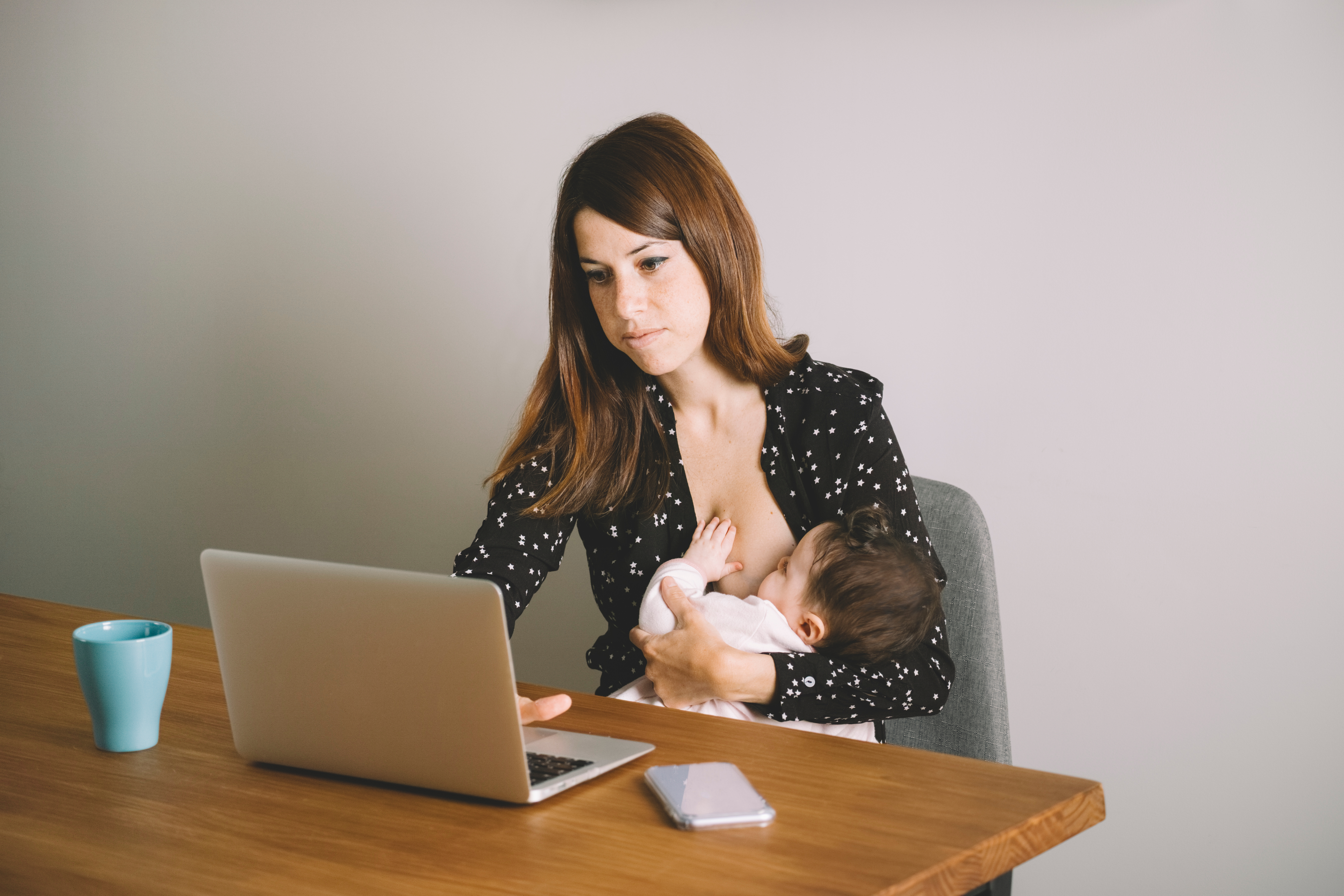I am an IBCLC (International Board Certified Lactation Consultant) in private practice in Northern Ireland and a La Leche League Leader with La Leche League of Ireland
How To Prepare for a Breastfeeding Consultation Via Video Link

Up until a week ago 95% of my breastfeeding consultations were done in person, usually in the parent’s home. I did a few consults online, but not many. In the last week or two life has been turned upside down for all of us by coronavirus. As a result I’ve moved all of my work online. Breastfeeding groups, and baby classes etc have all pretty much stopped, as have antenatal classes. Some of these have moved online, but some have just stopped. So I thought it would be helpful to give a little bit of background on how a breastfeeding consultation works online, what we can and can’t do and how we can make the most of the time. Some of this will be specific to how I work, and some will be pretty general.
Can I really help you through a screen?
I imagine this is the first question most people would have. The answer is a resounding YES. You may have given birth very recently and in the hospital you may have had midwives who were quite hands-on in the way they helped you. They may even have latched the baby on for you. Clearly this isn’t possible to do online. I can’t touch you and I can’t touch your baby - but actually I really try not to do this in consultations when I’m with parents either. What I want to do is empower you - to help you to find the way to do it yourself, rather than doing it for you. If I was with you and I used my hands a lot to get your baby latched on, we might get a good feed at that time, but then when I leave you may not be able to do it again. My role is to help you to find the right way for you so that you feel confident about achieving that good attachment at every feed.
Usually how I do this is by pointing out things that might help. I might say things like, “You have your baby really nice and close to you, but I’m just noticing how his hips are pointing out and so his tummy isn’t in against you, so you could just rotate his hips in.” Or I might say, “I’m wondering if a more reclined position might work for you better. Have you tried that? It would look a bit like this,” and I would demonstrate with my own body and show how I would sit and how I would position my baby on me. I do this when in a family’s home, and it works in exactly the same way online.
I use props in consults in someone’s home, and I use the same props online. This means that I use tools like knitted teaching breasts to show how it might help to hold or massage your breast. An example of them are here(https://www.lcgb.org/resources/teaching-tools/lcgb-knitted-breast-the-pattern/). A lot of consult time is actually taken up with talking anyway - explaining why the baby is behaving as they are, why they are having trouble getting a deep latch, or why they are being fussy at the breast, or why they are falling asleep without feeding well etc. All of that part works exactly the same online as in person.
There are a few things that are definitely more tricky to do. I can’t assess a baby’s tongue using my hands, and will rely on questions, video and pictures (more on this below). It’s harder to see how a baby might be moving when away from the breast. When I’m in the home I’m observing the baby all the time. If the baby is asleep in a Moses basket for example I look at how the baby is lying, if the baby starts to wake, I look at how they are rooting and what they are doing with their tongue. I look at whether they look like they may have a head tilt or bruising from a vacuum etc. These things are harder to gauge and again might need some extra pictures and video (more below).
But just because they are harder to gauge doesn’t mean that it isn’t possible to do - I just need to be thorough in the information that I ask you and in pictures I might ask you to take.
In a consult I usually move around quite a bit looking at the baby from different angles, checking how they are feeding, checking positioning of cheeks and body etc. I want to see how a baby approaches the breast and what they do as soon as they get there and begin the latching process. When doing this online I might ask you to move the camera around quite a bit so that I can see different angles - it can help to have a second person there to help with this.
So, assuming you are going ahead with an online consult I’d like to just step through the process of how you set it up - what tech you need to do it, and what helps to send me before the consult, and some things to think about around cameras and lighting etc.
Booking an Online Consult - What apps and tech do you need?
This is how I work with an online consult. When you book a consult on my website you pick a day and time that suits you. Once you have booked you will immediately get a confirmation email and it will have a URL link to a zoom meeting. Zoom is a video conferencing app. At the time for your appointment you simply click on the link in the email and it will take you straight to the zoom meeting and you will see me there. If you are using a phone or tablet it may ask you to download the zoom app - this is free to do. You will need a camera and a microphone. If you are using a phone or a table this will automatically have a camera and microphone. These can also be easier for you to move around than a laptop to get different camera angles.
On the booking email there is some extra information if you are worried that your baby might have a tongue tie. The email will ask you to click a link and fill in some information on my website about how your baby’s tongue looks and how they move it. It’s simple information with clear instructions. It would also be very helpful if you would send me some pictures of your baby - similar to those you will see on the website. I will also ask if you could send me some video of your baby feeding, and of your baby crying so that I can look at the tongue movement.
Other things to think about
It can really help to send me pics or videos about anything that is concerning you ahead of time. You will have already recorded them, you know that they show me exactly what you want me to see. If there is behaviour that only happens at night for example or only at some feeds, take some video of those and send them to me too in case we don’t see it during the consult.
Like all consults - make a list of everything that you are worried about and use me to get all your questions answered.
Think about the lighting in the room you are going to be in for the consult. If it is a darker room it can be hard to get good images on the camera. If your camera would use the flash when taking a picture, it is too dark. Use a well lit room.
Think about having someone else present at least for part of the consult. While we are talking through what has been happening, or talking through different behaviours the camera can stay still and you don’t need anyone there, but if you have booked a consult because you are having painful feeds or want support around positioning and attachment then having someone else there at that point will really help. While I suggest that you move into different positions or might suggest you put your hand here or there (showing you by demonstrating on a doll), I might also suggest that your helper moves back so I can see the position, or moves right in so I can see your baby’s mouth as they approach the breast.
Finally, give me lots of information when you are booking the consult. The more info I have the more I have an idea of what it is I need to look for in the consult, and I can ask for any pics or videos ahead of time so that we can use our time most effectively during the consult.
Give yourself some permission to feel a little nervous of the technology if you haven’t used it before. I’ve found that clients can be a little nervous at the start, but as the consult continues and we get a chance to work through the issues they get much more comfortable with it. We’re all getting used to doing a lot more of our communications online and this can be a great way to get needed breastfeeding support at this time.
Important Information
All material on this website is provided for educational purposes only. Online information cannot replace an in-person consultation with a qualified, independent International Board Certified Lactation Consultant (IBCLC) or your health care provider. If you are concerned about your health, or that of your child, consult with your health care provider regarding the advisability of any opinions or recommendations with respect to your individual situation.
